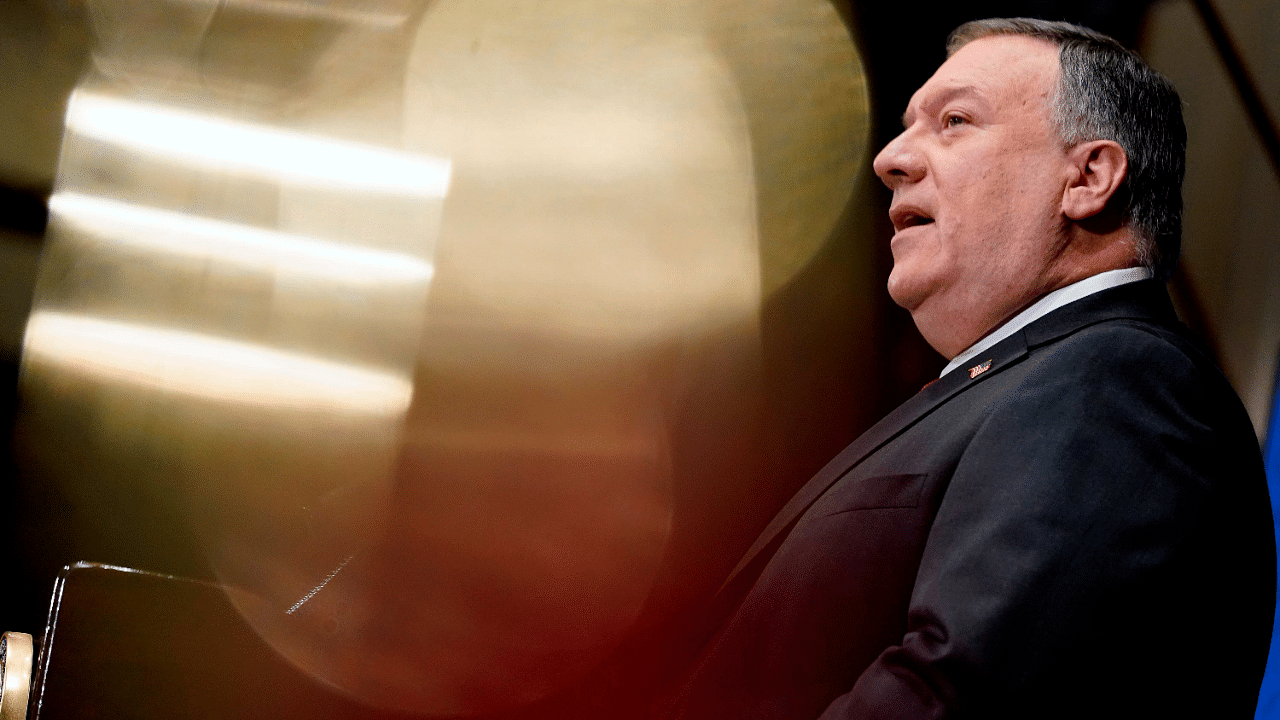
Secretary of State Mike Pompeo took his job nearly three years ago promising to restore “swagger” to US diplomacy.
He is leaving the State Department with many of its diplomats and staff expressing outrage at his behavior, accusing Pompeo of failing to acknowledge, much less protest, President Donald Trump’s role in inciting the rioters who laid siege to the Capitol last week. Just weeks before, Pompeo had suggested that Trump won an election that he lost.
And now, in Pompeo’s last week in office, US allies, who have long bristled at his threats and lectures, are making clear that they believe that he and Trump presided over the most far-reaching damage in decades to America’s traditional role as an exemplar of democracy.
Also Read | In final Trump chaos, Pompeo loyal to the end
For Pompeo, who left his post as CIA director to take on a job whose first occupant was Thomas Jefferson, it is the culmination of a tense relationship with the professionals inside what Trump once referred to as the “Deep State Department.”
In private conversations, some of the country’s top diplomats have described a wait-him-out strategy at the Harry S. Truman Building, as they tried — mostly unsuccessfully — to slow Pompeo’s drive to enact major policy shifts in his final days in office. Those have included easing restrictions on Taiwan to spite China, declaring Houthi rebels in Yemen a foreign terrorist organization over the objections of diplomats and humanitarian aid workers, and putting Cuba back on the list of state sponsors of terrorism.
In a few State Department offices, the occupants are keeping discreet electronic countdown clocks, ticking off the minutes until the Trump administration ends.
Also read — Trump says 25th amendment is 'zero risk' to him
Pompeo, for his part, has complained about how often diplomats speak to reporters, even arguing it is inappropriate for them to talk at all — although communicating to a global audience is the role of diplomats around the world. Representatives for the State Department did not respond Monday to requests for comment.
The critiques of Pompeo’s recent actions have been harshest in the State Department’s famous “dissent” channel, which gives diplomats and civil servants a safe way to express their disagreement with policy — without fear of retribution. So far, there have been two such dissent cables, one signed by more than 100 diplomats and civil servants, another by over 170 lawyers who work for the department.
Though different in wording, the dissents criticised Pompeo’s refusal to separate himself from the president for his efforts to whip up the crowd Jan. 6 that ultimately headed to the Capitol.
“Failing to publicly hold the president to account would further damage our democracy and our ability to effectively accomplish our foreign policy goals abroad,” one read.
The other dissent cable, which circulated Thursday and Friday and was signed by more than 100 State Department employees, called for Trump to be explicitly linked to the violence in public statements issued by the agency.
“Just as we routinely denounce foreign leaders who use violence and intimidation to interfere in peaceful democratic processes and override the will of their voters, the department’s public statements about this episode should also mention President Trump by name,” it said. “It is critical that we communicate to the world that in our system, no one — not even the president — is above the law or immune from public criticism.”
Doing so, the cable concluded, “would allow the beacon of democracy to shine on despite this dark episode. It would also send a strong message to our friends and adversaries that the Department of State applies an ethos of integrity and objective standards when it condemns assaults on democracy at home or abroad.”
One of the dissent cables asked Pompeo to throw his influence behind an effort to invoke the 25th Amendment to remove Trump from office. The secretary denounced the violence at the Capitol but never mentioned Trump’s role.
In recent days, the State Department deleted a page on its website on which an official description of Trump had been changed to say that his term had ended effective Monday. Officials blamed a rogue staffer for the unauthorized editing.
Pompeo focused his complaints last week on Twitter and Facebook for banning Trump, and at journalists for comparing the effort to manipulate the election results to a “banana republic.”
“The slander reveals a faulty understanding of banana republics and of democracy in America,” Pompeo wrote.
He also tweeted a photograph of himself, national security adviser Robert C. O’Brien and director of national intelligence John Ratcliffe meeting together. The message appeared to be clear: The three loyalists are not going anywhere until the end of the administration and have no intention of breaking the bonds with the president.
And top leaders at Voice of America ordered the reassignment of one of its White House reporters, Patsy Widakuswara, on Monday, hours after she tried to ask questions of Pompeo during his appearance at the federally funded news outlet, according to two individuals familiar with the events. The action was reported earlier by The Washington Post.
But it was not only Pompeo’s department raising protests. So did the allies.
The secretary canceled on Tuesday what would have been his last foreign trip. The itinerary already had been shortened, with an initial cancellation of a planned stop in Luxembourg after its foreign minister, Jean Asselborn, called Trump a “criminal” and a “political pyromaniac” in an interview for feeding the rioting at the Capitol.
The State Department had then said he still was traveling to Brussels “to reaffirm the deep and enduring partnership between the United States and Belgium and the unwavering U.S. support for NATO.” But that stop, too, was canceled.
Instead, what most NATO allies will remember about the Trump presidency was the president’s episodic threats to pull out of the alliance.